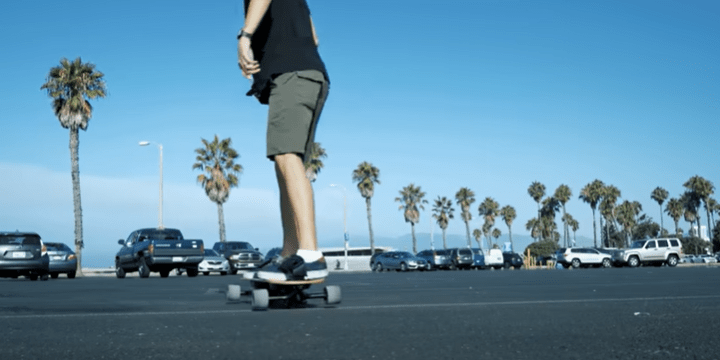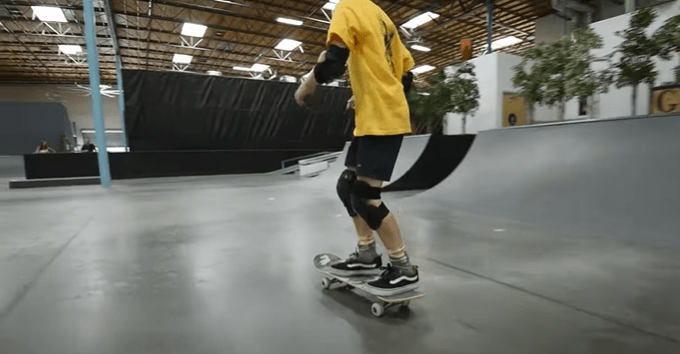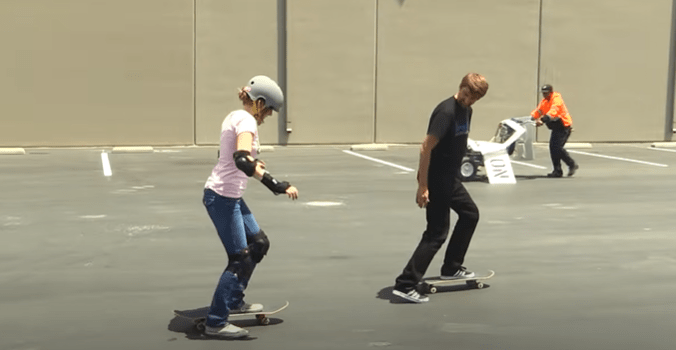

Skateboarding is a thrilling and enjoyable activity, but it’s important to learn the basics before attempting any tricks. To start, practice your balance by spending at least 20 minutes each day skating in a safe, open area. This will help you become more comfortable on the board and prevent falls.
Unlike bicycles, skateboards do not have pedals. Instead, you can accelerate by pushing off the ground with your foot. When it’s time to stop, you can slow down gradually or bring the board to a complete halt by stepping off or using your back foot to drag it.
It’s important to be cautious when skating at high speeds to avoid overshooting and losing control. If this happens, slow down and try again. With consistent practice and perseverance, you’ll soon master the art of skateboarding and be able to enjoy it even more!
When it comes to sliding, your left foot is considered Regular and your right foot is Goffy. The position you choose depends on the surface you’ll be sliding on. For instance, if you’re sliding on ice, you should use your Regular stance, with your left foot forward. On other surfaces, it’s safer to keep your knees slightly bent.
Don’t worry if the two stances look similar at first. With practice, one stance will feel more natural than the other. Take your time and experiment with each foot position until you find what works best for you. Soon, it will become second nature and you’ll be sliding with ease!


Learning how to push is an essential skill for skateboarding. To get started, stand on the skateboard and push off with one foot, similar to walking. Experiment with different foot placements until you find what feels most natural for you, and adjust your balance accordingly.
To push off, place your front foot at a 45-degree angle, slightly behind or above the front screws. Bend your front knee, and put all your weight on your front foot. Then, step down and push off with your back foot. Your back foot should be angled near the screws of the board.
Staying in shape is important for skateboarding, especially when skating ramps with gaps. Watch out for “Mango” pushes, which involve using your front foot as leverage to push off the screws on top of the board while keeping your weight balanced over both feet.
Once both feet are on the board, your front foot will be facing forward. As you push, keep your back foot on the board and rotate your body slightly for extra momentum. Bringing both feet together after each push will help maintain your balance.
To improve your balance, practice standing only on your front foot. Once you feel confident, practice pushing continuously to maintain your momentum and avoid falling backward. With practice and determination, you’ll soon master the art of pushing and be on your way to becoming a skilled skateboarder!


Learning to turn on a skateboard can be intimidating, but it’s actually quite simple. To turn your board, you need to lean it in the direction you want to go. If you want to turn left, lean to the left, and vice versa. If your trucks are too tight, kicking off will be difficult, so make sure they’re loose enough to allow for easy turning.
When you lean, keep your shoulders parallel to the board. This will allow gravity and friction to do their job, making turning easier. To turn, open up your arms while leaning on either side of where your foot touches down. This will cause the board to turn in either direction. It’s common to prefer turning one way over the other, but with practice, you’ll become comfortable turning in both directions.
Here are some helpful tips for turning:
Remember to be safe when practicing new skills. If you’re not confident in your surroundings, don’t attempt any risky maneuvers. With practice and patience, you’ll be turning like a pro in no time!


Skateboarders can use a foot drag as a quick and easy way to stop themselves from sliding on the ground. To perform a foot drag, skateboarders should lift their back foot and gently drag it across the ground, applying more pressure as needed to slow down or come to a complete stop.
To execute the foot drag maneuver, skateboarders should shift their weight onto their front foot, lifting the back foot off the board and dragging it along the ground. The pressure applied to the ground can be adjusted to control the speed of the skateboard, with more pressure slowing it down faster.
It’s important for skateboarders to be mindful of their surroundings and pay close attention to the terrain they are riding on. If in a hurry, it may be best to consider alternative routes that are more conducive to safe and controlled skateboarding.


Learning to skateboard starts with getting comfortable with the basics of pushing and turning. These foundational skills are essential for progressing to more advanced tricks. Spend time practicing rolling your board around on flat surfaces and popping wheelies until it becomes second nature.
The more you ride your skateboard, the more confident you will become. Consistent practice is key to developing the skills and confidence needed to do more difficult tricks. With time and effort, skateboarding can become a rewarding form of transportation and recreation.
Skateboarding requires patience and persistence, but the learning curve can be quick and enjoyable. Falling is a natural part of the process, so it’s important to embrace spills as an opportunity for growth and improvement. Remember, even the best skaters fall sometimes, so don’t be discouraged by setbacks. With dedication and practice, you’ll be on your way to mastering the sport in no time!
Skate parks may not be the safest or most comfortable place for new skateboarders to practice and learn.
Skateboarding typically takes place on concrete surfaces, such as skate parks or streets. However, beginners may benefit from practicing new tricks on grass because it provides more traction and can cushion falls, reducing the risk of injury on harder surfaces like pavement.


Unfortunately, skateboarding can be challenging, and skate parks can be intimidating for beginners.
Mastering a new skill is often difficult, and it’s common to feel anxious or fearful when starting something new. However, it’s important to push through these initial challenges and commit yourself to the process. Visualizing success can help motivate you to continue working towards your goals, whether it’s learning to skateboard or any other new skill.
